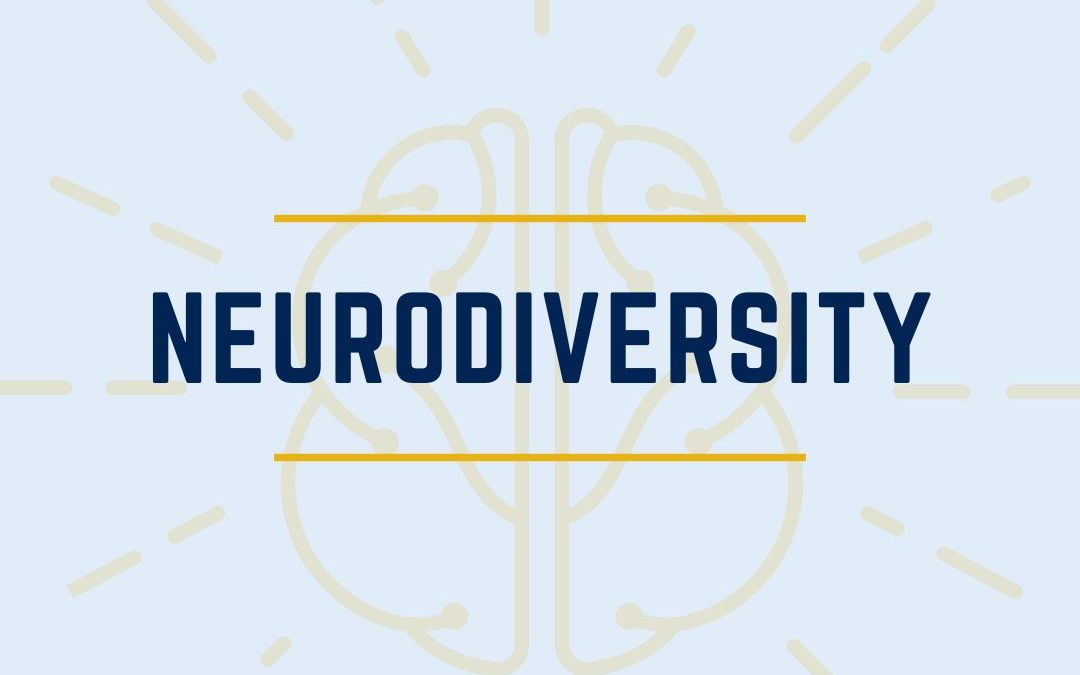“Neurodiversity” and “neurodivergent” are quickly becoming widely used terms in both education and society. Though they once were terms used to describe specific conditions, now many people are self-proclaiming their neurodiversity, focusing on the idea that brains simply work differently.
Neurodiversity is the concept that neurological differences such as autism, ADHD, dyslexia, and others should be recognized and respected as a natural variation of the human brain. Rather than being viewed as disorders that need to be fixed or cured, neurodiversity recognizes that these differences have unique strengths and can contribute to society in valuable ways.
Who Is Considered Neurodivergent?
Most often, those who are known as “neurodivergent” have at least one of the following conditions:
- Autism Spectrum Disorder
- ADHD
- OCD
- Tourette’s Syndrome
- Dysgraphia
- Dyslexia
- Dyscalculia
- Down Syndrome
- Sensory Processing Disorder
- Intellectual Disabilities
Neurodivergent individuals may face challenges with social skills, sensory processing, emotional intelligence, the way in which they learn, and/or physical behaviors. In the traditional education system, they may struggle to work cooperatively in a group, find a group of friends to fit in with, participate in the learning process effectively, or feel comfortable in the learning environment.
Along with those diagnosed with one of the above conditions, neurodiversity also includes those who identify as neurodivergent but lack a formal diagnosis. They are aware their brain operates differently, and they thrive with more awareness and accommodations.
Why Is It Important To Understand Neurodiversity?
The concept of neurodiversity challenges the traditional medical model of viewing neurological differences as disorders that need to be fixed or cured. This model has led to a culture of stigma and shame surrounding individuals with neurological differences, and often results in them being excluded from mainstream society.
The neurodiversity movement seeks to challenge this culture and promote a more inclusive society that values the positive contributions of all individuals.
How We Can Create A More Inclusive World
Individuals with neurological differences have unique strengths that should be both recognized and celebrated in the workforce and in society as a whole. For example, individuals with autism often have strong attention to detail and exceptional memory, while those with ADHD may excel in creative problem-solving and thinking on their feet. Valuing these strengths can lead to a more diverse and productive workforce, as well as a more innovative and creative society.
At the same time, reaping the benefits of building an inclusive environment means truly understanding and accommodating neurodivergent individuals. Allowing noise-canceling headphones in the workplace or classroom, for instance, can help someone with sensory challenges feel more comfortable. Offering various modes of communication, such as written communication rather than a phone conversation, shows appreciation of the different ways people prefer to communicate and feel heard most.
By becoming more familiar with what neurodiversity is and what it looks like, and promoting inclusivity, we can create a more diverse and productive society that benefits us all.
West Hills Academy aims to provide an individualized learning experience for those who struggle with the traditional school model, and are proud to educate many neurodivergent and unique learners. Reach out here for more information.
Resources:
https://www.forbes.com/health/mind/what-is-neurodivergent/
https://my.clevelandclinic.org/health/symptoms/23154-neurodivergent



